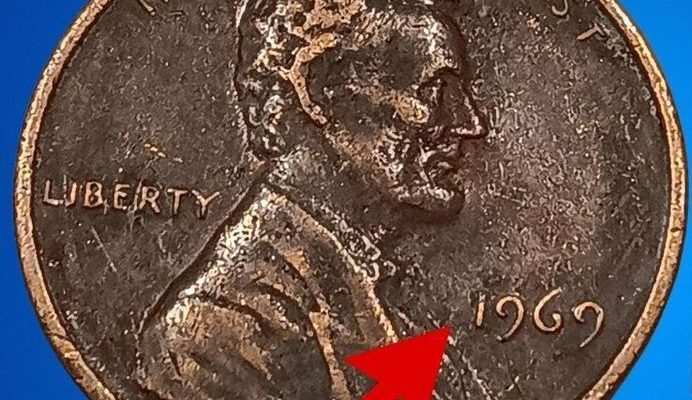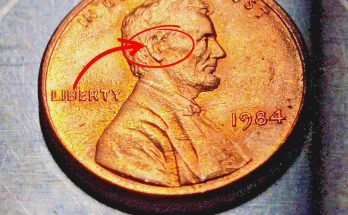💎 Most Valuable Lincoln Pennies Still in Circulation! Rare Pennies Worth Thousands!
The Lincoln Penny, first minted in 1909, is the most common coin in American pockets, yet it hides some of the most spectacular treasures in numismatics. The image featuring a close-up of Abraham Lincoln represents the potential for a life-changing find, as specific error coins and low-mintage issues have documented auction records reaching into the hundreds of thousands of dollars.
The key to finding a rare penny “still in circulation” lies in identifying major minting errors that were missed by the U.S. Mint’s quality control decades ago. While the majority of Lincoln Cents are worth only one cent, these select rarities stand out because of unique, easily identifiable characteristics.
👑 The Top 3 Million-Dollar Errors
These are the absolute pinnacle of Lincoln Cent collecting, and while the chance of finding them is minute, they represent the highest potential reward for careful searching:
-
1943 Bronze/Copper Cent: This is the undisputed king of valuable pennies. During World War II, the U.S. Mint was ordered to conserve copper for the war effort, so most 1943 cents were struck on zinc-coated steel. However, a tiny number of bronze planchets from 1942 were accidentally struck with the 1943 date.
-
Value: An authenticated 1943-P (Philadelphia) copper cent has sold for $240,000 to $372,000. The Denver mint mark coin (1943-D) is even rarer, with one example selling for over $800,000.
-
How to Check: A genuine 1943 copper penny is not magnetic and should weigh about 3.11 grams. The common 1943 steel cents are magnetic and weigh about 2.7 grams.
-
-
1944 Steel Cent: This is the reverse error of the 1943 cent. In 1944, the Mint returned to using bronze planchets, but a few leftover steel planchets from 1943 were mistakenly struck with the 1944 date. These coins are extremely rare, with the 1944-D having an auction record of approximately $1.7 million.
-
1969-S Doubled Die Obverse (DDO): This coin is famous for its dramatic doubling on the date and lettering, which is clearly visible to the naked eye. The Secret Service initially seized and destroyed many of these errors, leading to extreme scarcity.
-
Value: Only about 30 to 50 are believed to survive. The auction record for an uncirculated example (MS-64) is $126,500. Even a circulated example is worth $10,000 or more.
-
🥈 Key Dates and Varieties Worth Thousands
While the wartime errors top the list, other key dates and varieties are frequently found that can be worth thousands in collector markets:
-
1909-S VDB: The very first year of the Lincoln Cent and one of the lowest mintages (484,000). This coin features the designer’s initials (V.D.B.) on the reverse, which were quickly removed. An exceptional high-grade example has an auction record of approximately $1.2 million.
-
1955 Doubled Die Obverse (DDO): Highly recognizable due to the heavy doubling of the date “1955” and the mottos. This is a popular and scarce issue. A circulated example values around $1,500 to $2,000, while uncirculated examples can reach $32,400.
-
1914-D Lincoln Cent: A key date with one of the lowest mintages of the Wheat Cent era (1,193,000). Its highest recorded auction price is around $420,000 for a top-grade specimen.
-
1992-D Close AM: A modern error where the spacing between the ‘A’ and ‘M’ in “AMERICA” is abnormally close, matching the spacing used in 1993. This rare variety has sold for as much as $14,100, and an average quality coin is worth around $750 to $1,000.
🔔 The Most Important Step: Authentication
If you find a coin you suspect is one of these treasures, you must take the proper steps to verify its value:
-
Do Not Clean the Coin: Cleaning will severely damage its collector value.
-
Verify the Error: Use a jeweler’s loupe or magnifying glass to confirm the doubling or key feature.
-
Professional Grading: Due to the extreme value and counterfeits, the coin must be authenticated by a reputable third-party grading service like PCGS or NGC. This is the only way to confirm authenticity and unlock its full market price.
Would you like me to provide a step-by-step guide on how to visually check your pennies for the 1955 Doubled Die Obverse error?



